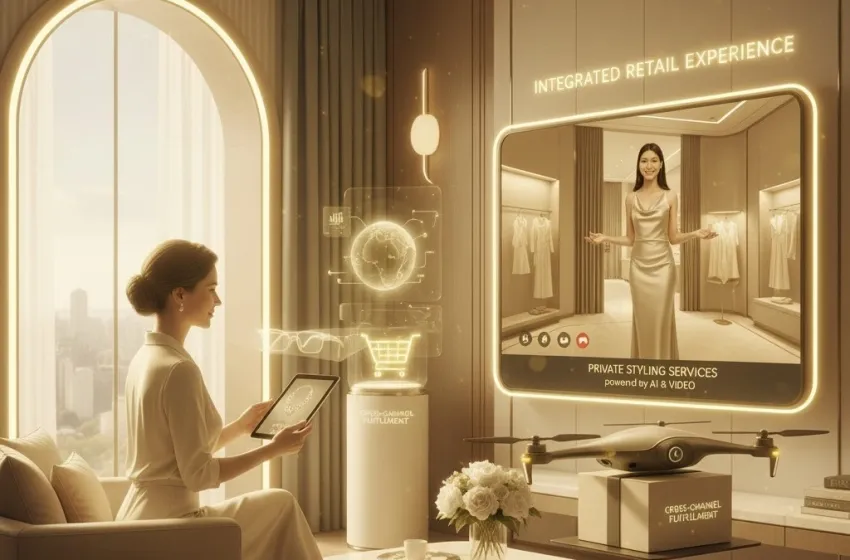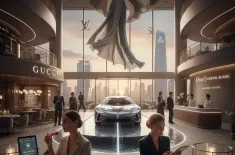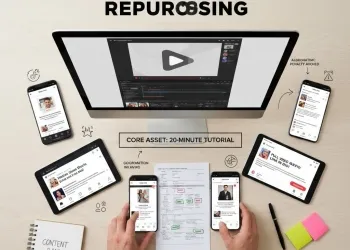Discover how luxury e-commerce platforms leverage AI, video, and private styling services to create an integrated retail experience
For decades, the foundation of high-end retail was the exclusive, in-store experience—the hushed atmosphere, the attentive staff, and the tactile quality of the merchandise. However, the 21st century has introduced a paradigm shift, forcing luxury brands to translate this exclusive sensory experience into the digital realm. The result is a sophisticated new ecosystem where luxury e-commerce platforms are no longer just transactional websites, but immersive digital flagships. This transformation has been driven by a modern consumer base—primarily younger, digitally native, and demanding both convenience and exclusivity.
The key to succeeding in this new environment is not merely putting products online; it is creating an integrated retail experience that seamlessly blends the best of the digital and physical worlds. The goal is to make the journey from inspiration to purchase, and even return, feel effortlessly premium, regardless of the channel. This seamless integration ensures that a customer's profile, preferences, and purchase history are consistent and accessible, whether they are browsing on a mobile app, chatting with a client advisor, or stepping into a flagship boutique.
The Digital White Glove: Private Styling Services
The most significant barrier for luxury brands moving online was the loss of the private styling services inherent in the brick-and-mortar model. High-net-worth clients rely on knowledgeable, trusted personal shoppers to curate wardrobes, advise on fit, and access exclusive pieces. Digital platforms have responded by evolving their clienteling—the practice of building deep, long-term relationships with clients—into a high-tech service.
At the core of this service transformation is the virtual personal shopper. These are not automated chatbots, but highly trained human stylists, often supported by sophisticated technology, who can assist clients remotely. The interaction is elevated through various digital tools:
- High-Definition Video Consultations: These are the new private fitting rooms. Stylists use high-quality video to present garments, demonstrating fabric movement and fit, all while conversing with the client in real-time. This replicates the one-on-one attention of a boutique, allowing the stylist to read subtle cues and personalize the experience.
- AI-Powered Curation: Before the consultation, AI algorithms process a client’s past purchases, browsing data, saved items, and even social media style cues. This analysis generates a hyper-personalized digital lookbook, ensuring the human virtual personal shopper can start the session with highly relevant, tailored recommendations. The AI handles the data crunching, freeing the stylist to focus on the human element: advising, building rapport, and closing the sale.
- Augmented Reality (AR) and 3D Modeling: Many platforms are leveraging AR-driven virtual try-on tools. For jewelry, accessories, and even apparel, customers can use their device cameras to see how an item looks on them, bridging the gap between digital visualization and physical reality.
This fusion of human expertise and cutting-edge tech means that a client in New York can receive a tailored styling session for a resort collection based in Milan, complete with immediate visibility into global inventory, offering a level of convenience and exclusivity never before possible.
The Seamless Convergence: Online/In-Store Integration
High-end retail platforms are now architecting a true integrated retail experience that erases the boundaries between online and offline channels. This is much more complex than simply allowing customers to check store inventory online; it involves a unified backend system that connects every touchpoint—from the customer relationship management (CRM) system to the inventory management system (IMS).
The key features of high-end retail platforms offering seamless online/in-store integration include:
- Unified Customer Profiles: Every interaction, whether a website browse, a purchase return, an in-store coffee, or a chat with a stylist, feeds into a single, comprehensive customer profile. This ensures the service is consistently personalized, as any associate, digital or physical, has the full history at their fingertips.
- Smart Fitting Rooms: In physical stores, smart fitting rooms leverage technology (such as RFID tags and mirrors with integrated screens) to recognize the items a customer brings in. The screen can then display complementary items, offer sizing alternatives, or even connect the customer instantly with a virtual personal shopper for real-time advice.
- Clienteling Apps for Associates: Store staff are equipped with mobile apps that give them the same real-time data as the e-commerce site. They can see what a customer viewed online before coming in, what items they saved in their digital wishlist, and what their preferences are, allowing them to provide a hyper-relevant, non-intrusive service the moment the client walks through the door.
- "Endless Aisle" and Digital Showrooms: Physical stores often lack the space to display every item in a collection. By integrating the online platform, a store associate can instantly show a customer the full collection on a tablet or large screen, allowing them to purchase an item not physically in stock, which can then be shipped directly to their home.
Mastering the Logistics of Luxury: Cross-Channel Fulfillment
The luxury experience extends beyond the purchase moment to the delivery of the product. Flawless execution in logistics is crucial for maintaining the brand's premium image. This is where cross-channel fulfillment becomes the operational backbone of the integrated retail experience.
Cross-channel fulfillment is the strategy that allows a customer to purchase or receive an item through any channel, regardless of where the inventory is physically located. This includes practices like:
- BOPIS (Buy Online, Pick Up In-Store): The convenience of purchasing immediately online and collecting the item from a nearby boutique, often packaged and ready in a VIP area.
- SFS (Ship From Store): Using store inventory to fulfill online orders when a warehouse may be out of stock or geographically less efficient. This speeds up delivery and maximizes inventory utilization across the entire network.
- BORIS (Buy Online, Return In-Store): Providing the flexibility for a customer to try on a garment at home and return it in person, where they can then be engaged by an in-store stylist for an exchange or new purchase—turning a potential loss into a clienteling opportunity.
- Same-Day/White-Glove Delivery: For high-value items, brands offer premium, scheduled delivery services, complete with luxurious packaging and sometimes even in-person unpacking assistance, ensuring the digital purchase culminates in a moment of physical opulence.
The efficiency of this model relies on a single, real-time view of inventory across all physical stores and distribution centers. This sophisticated orchestration ensures that the promise of personalized service is never undermined by an operational failure, such as an item being out of stock after an order is placed.
The Future is Hyper-Personalized and Immersive
The trajectory of luxury e-commerce platforms and the role of the virtual personal shopper points toward an increasingly immersive and invisible service model. The next generation of platforms will see an even deeper integration of video and AI for personalized remote styling appointments.
Advanced AI will move beyond just product recommendations to acting as a true "Style Co-Pilot." This means:
- Predictive Styling: AI will analyze weather, upcoming calendar events (pulled with customer permission), and known travel plans to proactively suggest relevant outfits or pieces before the client even realizes they need them.
- Generative Design: Imagine a client asking their virtual personal shopper for "a black tie outfit that coordinates with my partner's navy suit and works in a humid climate." The AI could instantly render custom mood boards, or even generate design concepts for bespoke accessories, making the consultation an act of co-creation.
- Haptic Feedback and Digital Textures: Emerging technology may allow high-end customers to "feel" the simulated texture of a fabric through specialized devices, adding a tactile element to the remote styling process and further closing the experience gap with in-store shopping.
Ultimately, the goal of the luxury e-commerce market is to leverage technology to eliminate friction while maximizing delight. By ensuring a complete integrated retail experience supported by flawless cross-channel fulfillment and unparalleled private styling services, the high-end sector is proving that exclusivity and digital accessibility are not mutually exclusive, but rather the dual pillars of its continued success. The virtual personal shopper, powered by the synergy of human expertise and intelligent algorithms, is the new face of luxury, dedicated to delivering a tailored universe of style directly to the client, wherever they may be.



































